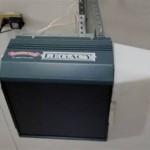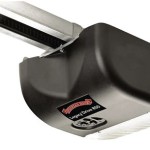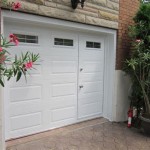Rubber Garage Door Bottom Seal
A rubber garage door bottom seal is a vital component to keep your garage protected from the elements. It provides a weather-resistant barrier, preventing water, snow, wind, and other debris from entering your garage and causing damage to your belongings.
There are several different types of rubber garage door bottom seals available in the market, each with its own unique features and benefits. Some of the most common types include:
- EPDM rubber seals: Ethylene propylene diene monomer (EPDM) is a synthetic rubber known for its excellent durability and resistance to extreme temperatures.
- TPE rubber seals: Thermoplastic elastomer (TPE) is a blend of rubber and plastic, offering a combination of flexibility and strength.
- PVC rubber seals: Polyvinyl chloride (PVC) is a versatile material often used in construction and building materials due to its durability and cost-effectiveness.
When choosing a rubber garage door bottom seal, it is essential to consider factors such as the climate in your area, the type of garage door you have, and the level of protection you need. For instance, if you live in a region with heavy rainfall or snowfall, an EPDM seal with a higher water resistance rating would be a good choice.
Installing a rubber garage door bottom seal is relatively straightforward and can be done as a DIY project with the right tools and materials. Here is a general overview of the steps involved:
- Clean the garage door: Remove all dirt, debris, and old weatherstripping from the bottom of the garage door using a wire brush or scraper.
- Measure the width and height of the garage door: Determine the exact measurements of the area where the seal will be installed to ensure a precise fit.
- Cut the seal to size: Use a sharp utility knife to cut the rubber seal to the desired length, allowing for a slight overlap at the corners.
- Apply adhesive: Apply a thin layer of construction adhesive to the back of the seal, following the manufacturer's instructions.
- Position the seal: Carefully position the seal along the bottom of the garage door, pressing firmly to ensure proper adhesion.
- Trim excess: Once the seal is in place, trim any excess material around the edges using a sharp knife.
Maintaining a rubber garage door bottom seal is equally important to ensure its longevity and effectiveness. Regular inspections should be conducted to check for any signs of wear or damage. If any cracks, tears, or other issues are found, the seal should be replaced promptly to prevent further problems.
With proper installation and maintenance, a rubber garage door bottom seal can significantly enhance the protection and comfort of your garage for years to come.

Epdm Rubber Garage Door Bottom Kit Frost King Weatherization Products

Frost King 16 Ft Garage Door Bottom Seal Kit 2 1 4 In G16h The Home

4 Inch Black 1 T Style Heavy Duty Rubber Garage Door Seal

Frost King 16 Ft Garage Door Bottom Seal Kit 2 1 4 In G16h The Home

Garage Door Bottom Rubber Seal Repair Replace B W Doors

Adam S Door Systems Blog How To Weather Seal A Garage

Epdm Rubber Garage Door Bottom Kit Frost King Weatherization Products

M D 16 Ft Black Rubber Garage Door Bottom Seal

Rubber Seal 1 4 T Style Garage Door Weather

Garage Door Weather Seal Replacement Services A1 Service








